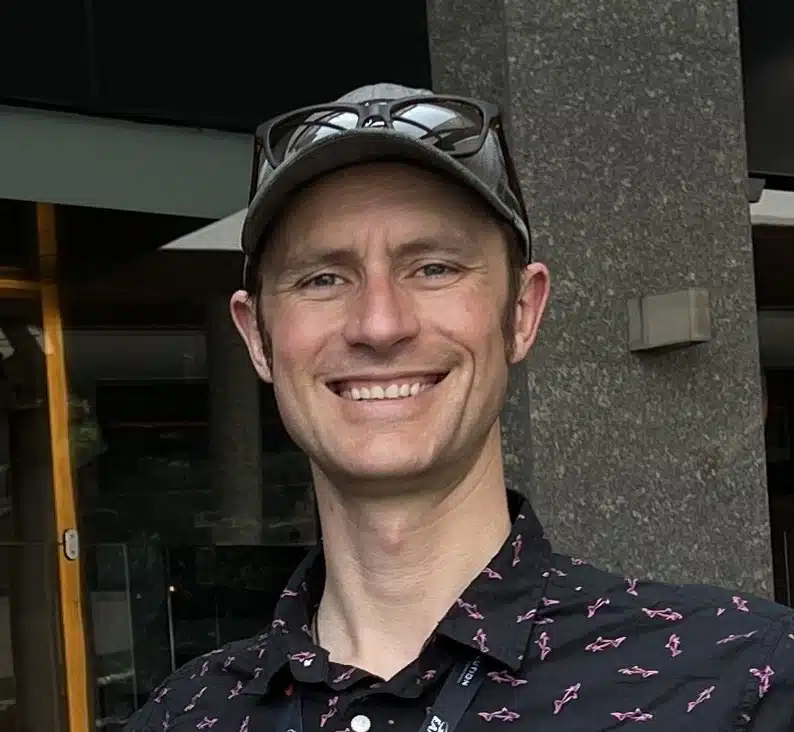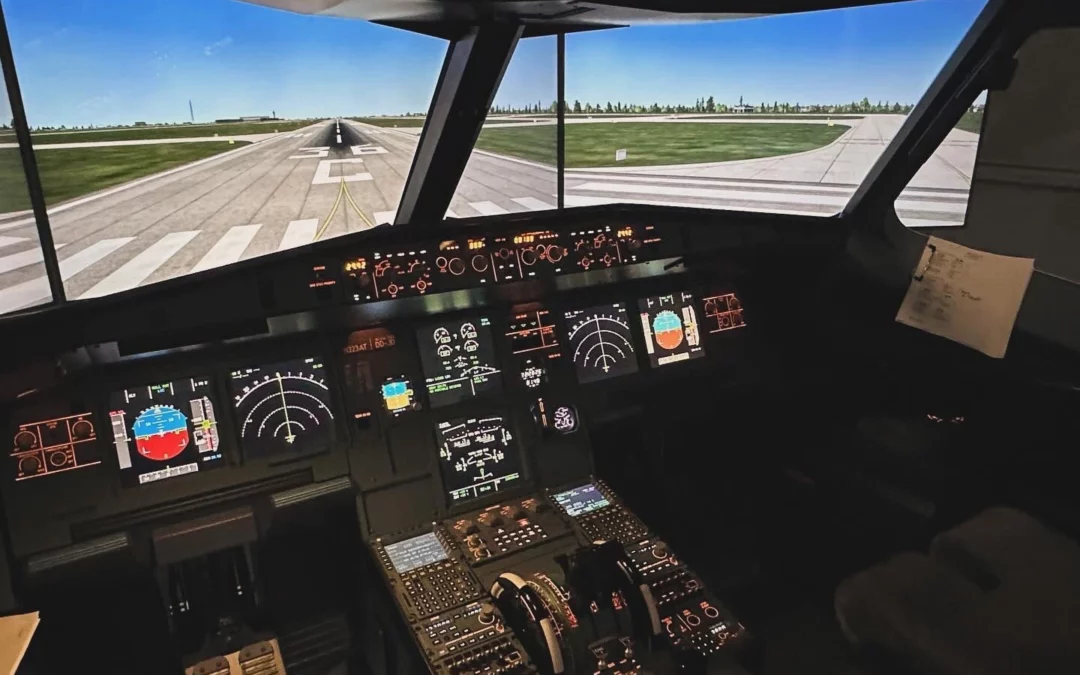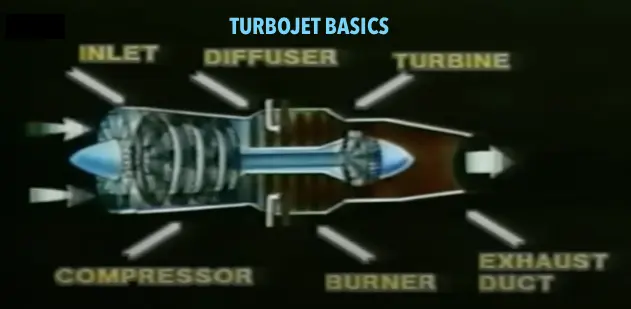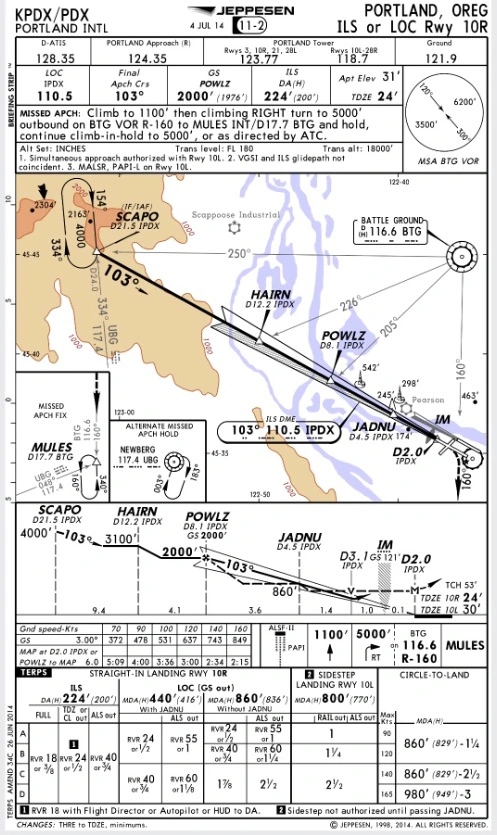Airline Pilot Interview Prep: A Comprehensive Guide
Securing a pilot position with an airline (legacy, low-cost, or regionals) requires more than just technical expertise; it demands exceptional preparation and an understanding of the airline's values — not to mention being a team player. Let's dive into the crucial tips for acing your airline pilot interview!
Interview Tips for Aspiring Airline Pilots
Table of Contents
- Introduction
- Preparing for the Interview
- Gathering Documents and Logbooks
- Creating a Professional Environment
- The Initial Introduction
- Showcasing Your Flying Experience
- Highlighting Fun Facts About Yourself
- HR Round
- Discussing Strengths and Weaknesses
- Sharing Your Flying History
- Tackling TMAT (Tell Me About A Time) Scenarios
- Expressing Passion for SkyWest
- Resume Review
- Crafting a One-Page Aviation-Focused Resume
- Addressing Employment Gaps
- Explaining Career Transitions
- Logbook Examination
- Meeting Flight Recency Requirements
- Understanding "Look at Me Hours"
- CRM (Crew Resource Management)
- Navigating In-Flight Scenarios
- Prioritizing Communication and Collaboration
- Technical Knowledge Assessment
- Testing Knowledge on FARS, Aerodynamics, and Turbine Systems
- Handling Various Scenarios
- Weather Understanding
- Evaluating Your Understanding of Weather Elements
- Interpreting METAR/TAF Reports
- Jeppesen Plates Mastery
- Briefing Approach Procedures
- Handling Inoperative Situations
- Miscellaneous Tips
- Embracing the "Goldfish" Mentality
- Completing ATP-CTP Course
- Managing Availability and Contacting Recruiters
- Clean Up Your Social Media and Know Your Background!
- Letters of Recommendation
- The Importance and Weight of Internal Letters
- Study Materials
- Recommended Resources for Comprehensive Preparation
1. Introduction
Before you even step into the interview to land your airline pilot job, ensure you have everything in order. This includes your documents, logbooks, and a distraction-free environment (you'll likely be in a virtual call). Dressing in business professional attire (suit and tie), even for a virtual call, sets a positive tone.
Interviews are your first chance to make it, or break it. First impressions count A LOT! Some interview teams see over 75 applicants per week! They've probably seen it all, so be sure to bring your A game. Faking, flubbing, or fibbing when you don't know the correct answer won't go unnoticed, nor will Joe-Cool attitudes, arrogance, or superiority complexes.
Your interviewer is a gatekeeper from a career worth multiple-millions — treat them, and the process with respect, dignity, and humility. A lot is riding on this, AND even if you are turned down, know that the is room for improvement and don't get discouraged. Airlines will continue to hire and any rejection is just an opportunity for improvement. Let's dive in!
2. Preparing for the Interview
Gathering Documents and Logbooks
Having your documents (license, current first class medical, radio license, current passport) and logbooks readily accessible is vital. This showcases your organizational skills and preparedness. Ensure your logbooks are tallied and verified. You'll be shocked at just how in-depth airlines will scour your logbook. Every new hire is a potential liability for their multi-millions (or billions!) dollar brand. They will check that you dotted your i's and crossed your t's so catch all your own mistakes and be prepared to speak to them because they likely will.
As you go through your flight history, look for flights that stood out as exceptional, challenging, or ones where you could create a Tell Me About A Time (TMAT) story from. Write them out, note the date/aircraft/crew/circumstances and practice telling that event.
Creating a Professional Environment
Eliminate potential distractions and present yourself in a professional manner. This includes being aware of background noise and ensuring a calm setting. Make sure kids are being taken care of, that no one will disturb you, and that you're well lit. Get that haircut you've been putting off, sit upright, test your mic and camera before go-time. Do some mock virtual calls with a friend and ask for their feedback on how you present on camera and adjust as necessary.
Interview Attire
As Angie Marshall of Cage Marshall Consulting remarked, "Look professional and be known for your personality/professionalism, not what you wear."
That means no crazy socks, wild suits, and drop the lapel pin. No need to align with a country, sports team, or something else right now. Just present as clean and professional by dressing for the job you're seeking. Keep jewelry to a minimum, shoes brown or black, and ties simple against a white or creme/soft color shirt.
If you'll be in person, don't wear perfume or cologne. Have an organized briefcase, portfolio or shoulder bag. Keep hair neat and away from face, men: shave or at least dial in the 'stache. Fingernails should also be trimmed and clean.
3. The Initial Introduction
The first few minutes are crucial. Aim for 5 minutes max, more if you have some amazing thing about you to trumpet (like Sir Nik Fialka's knighthood). Be sure to smile, be relaxed. Practicing your intro/about me spiel will go miles in making you present as calm, confident, and approachable. Get feedback and even video tape yourself.
Showcasing Your Flying Experience
Highlight your achievements and experiences, providing a glimpse into your aviation journey. You need to only be yourself. Don't worry that you haven't been passionate about aviation since birth, or became a Captain by 23 years old. Those are journeys others have enjoyed, own yours and be proud of the work you've put in to make it to and qualify for this interview.
Highlighting Fun Facts About Yourself
Adding a personal touch makes you memorable. Share anecdotes that reflect your passion for aviation. Weave in your support for others via volunteering, community engagement. Avoid self-deprecating comments, stay on the high road of any sensitive topics, and call in a spirit of warmth and joy — it will be felt on the other side.
4. HR Round
This round delves into your personal and professional attributes. The company wants to know what makes you tick, if there are any red flags that might be present (they know 99% of the usual ones out there!).
Discussing Strengths and Weaknesses
Be prepared to articulate your strengths and address your weaknesses positively. Own what you're good at and what needs improvement. Humility goes miles while braggadocio attitudes will leave a bad taste.
Expect questions like, "What challenges might you face in the Part 121 Airline and Transport Aircraft world?" or "What would your employer say is your greatest weakness?"
Sharing Your Flying History
Provide insights into your aviation journey, showcasing your commitment and dedication. What are points that were easy, which were hard? What have you grown and learned from in your professional pilot pursuits?
Tackling TMAT (Tell Me About A Time) Scenarios
Prepare for unexpected scenarios, demonstrating your problem-solving abilities. Good ones to prepare and practice for are questions about crew conflicts, questioning authority, handling an emergency, dealing with external pressures from crew or passengers, etc.
Airlines are also big on Situational Awareness (SA), Crew Resource Management (CRM) so be sure to weave those concepts and hazard and risk mitigation and management into your responses.
Expressing Passion for the Carrier You're Interviewing For
Know and reference the guiding principles of the airline you're interviewing for. Articulate your enthusiasm for contributing to their mission. Highlight the values, mission, and/or achievements that genuinely speak to you and excite you.
Prep by exploring that airline's history, mission, annual reports, or about us section of their website. Even if you're willing to take any airline job, show the interviewer that you spent time getting to know their company.
5. Resume Review
Ensure your resume is concise, aviation-focused, and addresses any employment gaps. Read through everything your airline sent you and bring it! This is a test to see what details you adhere to and can be immediate grounds for rejection if you don't bring them!
Crafting a One-Page Aviation-Focused Resume
Present a snapshot of your aviation career, emphasizing relevant experiences. Keep it to one page and black text color. They have to sort through so many resumes that you'll lose points if you make their jobs harder.
Keep font sizes legible and only two sizes. The fanciest thing should be the weight of your resume paper (24 lb, and have all of your ratings, hours easily found and understood with plenty of white space around them.
Use bullet point descriptions, and avoid any HIPAA protected information. Also, use a professional or benign email address not ilivetobreakfars@hotmail.com.
Addressing Employment Gaps
Be ready to explain any gaps in your employment history with transparency. Life happens, no need to hide it or make it a bigger deal. Just be prepared to talk about them, explain how you continued to grow and learn, and they will likely be happy with the response and move on.
Explaining Career Transitions
Articulate why you moved on from previous positions, showcasing a strategic approach to your career. Airlines are looking for people who they can trust to be worth the investment they'll put into you. Showcase how you approached all of your career choices and what you did to make the most out of them.
6. Logbook Examination
This phase evaluates your recent flight hours and specific experiences. Some companies will pour through your logbooks in minute detail. Be sure that logbook is neat-and-tidy. Missing any signatures? Get ready to fix them or address them. It may be a good practice to number your flights if possible so that you can speak to specific flights in your TMAAT questions.
Meeting Flight Recency Requirements
Demonstrate compliance with the required recency hours, application hours, etc. Airlines are wanting pilots that are fresh, current, and up-to-date on recent flight experience.
Understanding "Look at Me Hours"
Explain the significance of high-performance hours and various flight experiences. These are things like dual given, MEL Turbine time, turboprop, etc.
7. CRM (Crew Resource Management)
This segment evaluates your ability to work efficiently within a team. You'll be expected to get into a "flight deck" mindset.
Navigating In-Flight Scenarios
Demonstrate your decision-making and communication skills in simulated in-flight scenarios. Approach this as if you were in the plane — take your time and wind your watch. No knee jerk reactions.
Think about what is being asked, get clarification on anything you don't understand and be sure to: aviate, navigate, communicate.
Coordinate with your other pilot, divvy up duties, work with your Flight Attendants, Dispatch, maybe even other passengers. What does a medical emergency need? What about mechanical? In flight emergency? How will you handle ATC, or diverting?
Prioritizing Communication and Collaboration
Emphasize the importance of effective communication and collaboration, adhering to the 2-in/2-out policy: 2 groups inside the airplane: flight crew and passengers; 2 groups outside: ATC and Dispatch (Company).
8. Technical Knowledge Assessment
This round assesses your understanding of aviation regulations, Jeppesen charts, diagrams, aerodynamics and systems.
Testing Knowledge on FARS, Aerodynamics, and Turbine Systems
Answer questions confidently, avoiding guesswork or bull scat answers. Know your regulations and basics like cloud clearances, altitudes, equipment needs for various airspaces, speeds, etc.
High altitude knowledge is very important for transport category aircraft. Know things like mach buffet, critical mach, coffin corner, swept wing design, dutch roll, etc. Be able to talk about 1-2-3 rule, weather minimums, alternate minimums, etc.
You'll likely need to explain how turbine engines work and function, as well as knowing any aircraft you've put down as being able to fly. If you're typed in an aircraft, you'll likely be asked about your important V-speeds, memory items, and possibly be asked to draw out electrical, hydraulic, or fuel systems.
Handling Various Scenarios
Navigate through scenarios related to takeoff, departure, and technical malfunctions. Things like smoke in the cockpit, rapid depressurization, or systems failures. They won't expect you to know an aircraft you've never trained in, but they will look for your calm, focused, and professional steps to dealing with the issue.
You may also be asked about handling a possibly intoxicated Captain or crew member, or a crew member violating FARs. They want to see what you would do (always err on the side of following the regulations!).
Minimum Equipment List (MEL) questions may be asked, specifically as they relate to Reduced Vertical Separation Minimum (RVSM) airspace. Unless you have prior 121/135 experience, don't expect them to get into too much detail.
9. Weather Understanding
Showcase your understanding of weather elements and interpreting METAR/TAF reports.
Evaluating Your Understanding of Weather Elements
Discuss stages of thunderstorms, high vs. low pressure, and other meteorological concepts. Microbursts, windshear, and contaminated runways are big issues the airlines face.
Other danger zones may be mountain waves, virga, clear air turbulence (CAT), and icing conditions and risks. Wake turbulence is another topic of importance esp. with smaller transport aircraft around larger airframes.
Interpreting METAR/TAF Reports
Demonstrate your ability to read and interpret weather reports accurately. Know the pesky strange METAR codes like BC, PL, and GS (patches, ice pellets, and small hail, respectively).
10. Jeppesen Plates Mastery
This section evaluates your knowledge of approach procedures and handling inoperative situations like approach changes. Pretty much all airlines use Jeppesen charts, so get to know these charts now!
Briefing Approach Procedures
Practice approach briefings, emphasizing thoroughness. Go through the logical and ideal order. Bold Method has an excellent 11 step guide for briefing a Jepp plate. If paired with a crew mate, ask if they're ready to brief it. Ensure you're both looking at the chart date/effective date and same plate! Once complete, say "Brief complete."
Handling Inoperative Situations
Demonstrate adaptability by addressing unexpected challenges during the briefing. What would your flow be to change up an approach in a descent to the airport. Know about CAT II/III minimums and restrictions.
11. Miscellaneous Tips
Embracing the "Goldfish" Mentality
Make a mistake or flub? No one is expecting perfection, so flush away errors and move forward, emphasizing the importance of debriefing. Let that goldish memory wipe away, and hit the next set of challenges with fresh confidence and optimism.
Completing ATP-CTP Course
Ensure completion of the ATP-CTP course as a testament to your commitment. I used ATP Jets ATP-CTP because of their virtual ground options which meant less travel time and lower cost. Wherever you go, the training and exposure to 121 flying will raise your interview game even if you've only flown around your home airport for your 1100 or 1500 hours.
Managing Availability and Contacting Recruiters
Be proactive in managing your availability and reaching out to recruiters. Leverage your contacts, establish a LinkedIn profile.
Clean Up Your Social Media and Know Your Background!
Active on social media? Review your digital footprint and clean it up. Companies have dedicated teams who will scour the interwebs looking for things that may shine unfavorably on you — and extension, them if they were to hire you. Assume anything and everything posted is available for digging up.
Know your driving history and don't hide anything. You can request your National Driver Register (NDR) data and see what is present on your driving record. Fess up and own your mistakes. Hiding them is a number one way to end your interview there and then.
12. Letters of Recommendation
Letters of recommendation (LOR) should speak to your flying skills (if applicable, a varied work history may draw LORs from former co-workers, bosses, etc. not in aviation). Internal LORs (letters from employees or pilots of that airline) carry more weight which should be used it possible. Chief pilots, line pilots, flight school owners are all high quality LOR sources and showcase your standing within the industry.
13. Study Materials
Utilize recommended study materials for comprehensive preparation. Explore a range of resources, from books to online videos, to enhance your aviation and leadership knowledge.
Recommended Resources for Comprehensive Preparation
- Everything Explained for the Professional Pilot by Lengel
- Systems for a Professional Pilot
- The Bold Method for Jeppesen Charts
- Fundamentals of Jet Engines by Nick Maverick
- Turbine Pilot’s Flight Manual Book by Brown & Holt
- The Illustrated Guide to Aerodynamics by Smith
- Advanced Aircraft Systems by David Lombardo
- FAR AIM
- Pilots Handbook of Aeronautical Knowledge
- Airplane Flying Handbook
- Instrument Flying Handbook
- YouTube videos
- Airport signs and markings
Airline Pilot Interview Prep Options
Many options exist for pilots to prepare for airline pilot interviews and applications. These range from gouges and basic interview prep support all the way to one-on-one simulated interview prep, resume reviews, and application support. Explore the career prep options below (In no particular order):
- Raven Careers - https://ravencareers.com
- Spitfire Elite Consulting - https://www.spitfireelite.com/
- Emerald Coast - https://emeraldcoastinterviewconsulting.com/
- Fly the Line - https://flytheline.com
- Aviation Interviews - https://aviationInterviews.com
Landing an Airline Pilot Interview
In conclusion, preparing for your airline pilot interview requires a holistic approach, preparation, planning, and combining technical knowledge, a teamwork approach alongside a passion for aviation. By following these tips, you increase your chances of making a lasting impression on the interview panel. Best of luck and safe skies!

Tigre Pickett
CE525S / Commercial Pilot / AGI IGI
Tigre's airtime began when his mother achieved her Private Pilot's License eight-months pregnant with him. Since then, he's learned to fly with his father, Rich Pickett, and now works with him as Chief Co-Pilot and Creative Director for Personal Wings.
After working in a variety of other industries, Tigre recently set his sights on becoming a professional pilot and within seven months achieved his first jet type rating in the Citation 525 series aircraft and now flies two Citations under Part 91.
A father, husband, and all around talented man, Tigre is excited to see all of his family achieve their wings!




